The Ethan Allen Class of fleet ballistic missile submarines were larger and more advanced engineered than their predecessors, the George Washington Class.
Unlike the George Washington Class, whose hulls were retrofitted to house missiles, the Ethan Allen Class was uniquely crafted from the keel up with the specific intent of launching ballistic missiles. Their design marked a significant improvement in size, structure, and missile accommodation, solidifying their role as dedicated Fleet Ballistic Missile Submarines (FBMs).
| Ethan Allen class SPECIFICATIONS | |
|---|---|
| Length: | 410 ft 5 in (125.13 m) |
| Height: | 32 ft (9.75 m) |
| Width: | 33 ft (10.06 m) |
| Weight: | 6,900 tons surfaced 7,900 tons submerged |
| Armament: | 16 air ejection tubes for Polaris missiles and four 21-inch torpedo tubes |
| Speed: | 21 knots on the surface 16 knots submerged |
| Powerplant: | Single S5W pressurized water nuclear reactor |
| Crew complement: | 136 men; 12 officers, 124 enlisted |
| Contractors: | General Dynamics Electric Boat Division, Newport News |
| Names of submarines: | (608) Ethan Allen, (609) Sam Houston, (610)Thomas A. Edison, (611) John Marshall, (618) Thomas Jefferson |
Although they were not as sophisticated as the subsequent Lafayette Class, the Ethan Allen Class subs were the first of their kind to achieve a deep-diving capacity in the U.S. FBM fleet.
Description
Design
The Ethan Allen Class of nuclear ballistic missile submarines was the first fleet intentionally designed to launch ballistic missiles.
The submarines, based on the SCB-180 submarine design, implemented design elements from the Thresher (SSN 593) class, such as the deep-diving hull made of Hy 80 steel, enabling them to exceed the George Washington Class in diving depth.
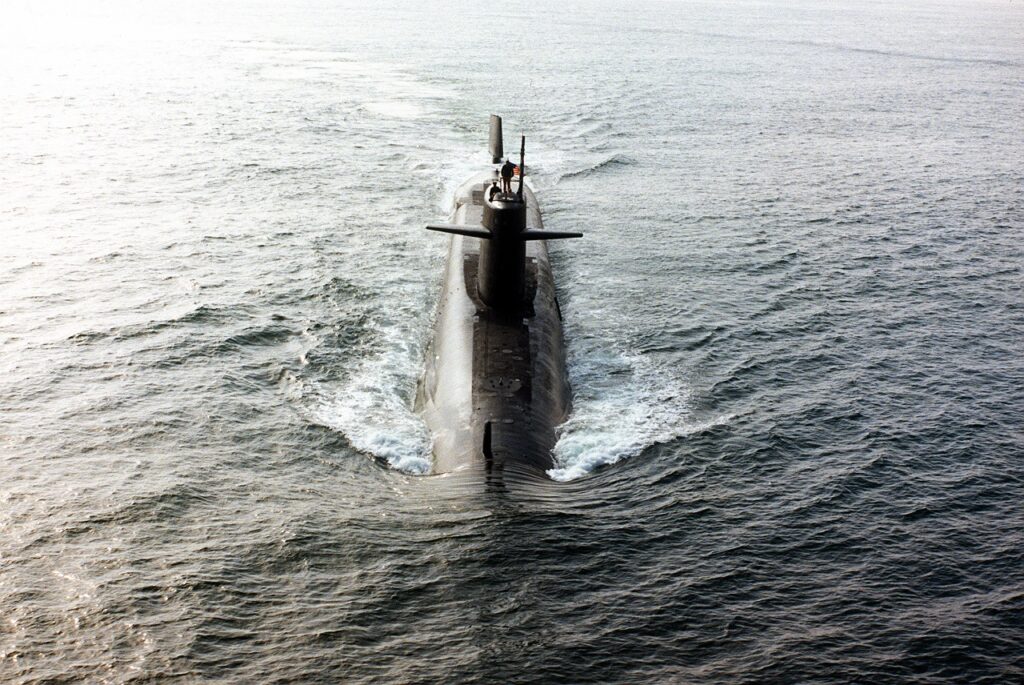
With a submerged weight of 7,900 tons, the Ethan Allen Class submarines were notably larger than the George Washington Class, which weighed 6,700 tons. The hull of these submarines measured 410 feet in length and thirty-three feet in width, featuring a surface displacement of 6,900 tons.
They possessed four torpedo tubes compared to the six of the George Washington Class, and incorporated Thresher-type machinery quieting features, along with improved accommodations.
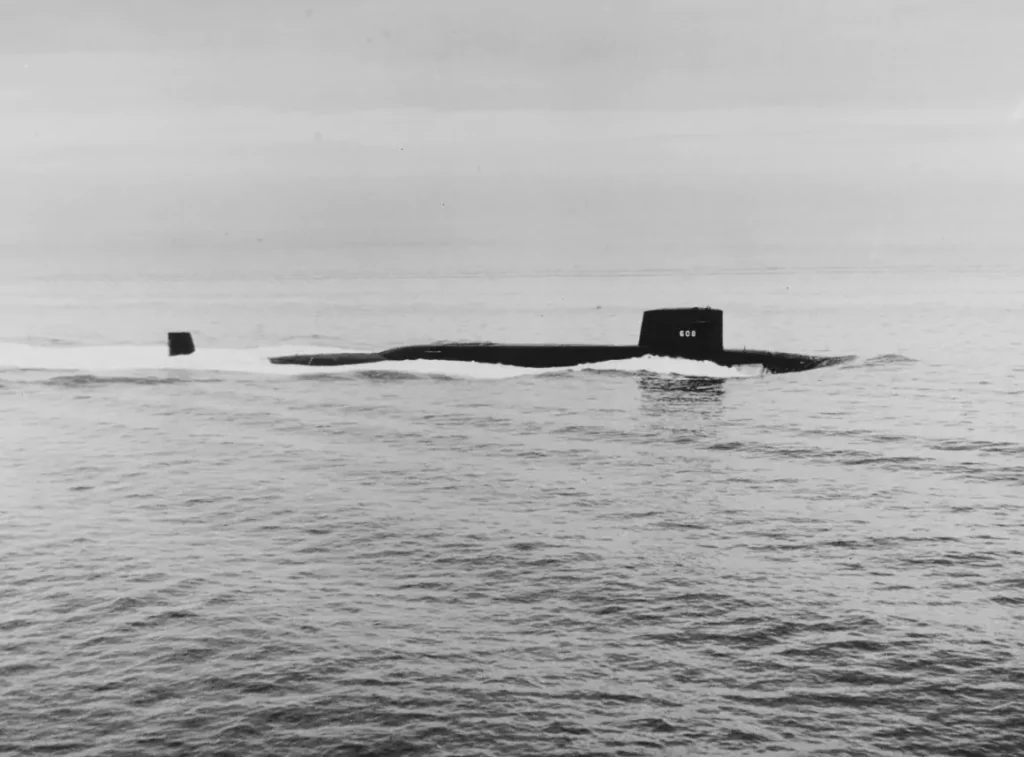
The Thresher significantly influenced the Ethan Allen Class’s interior design, systems, and depth capabilities, echoing how the Skipjack had guided the George Washington Class’s design.
Missiles
The Ethan Allen Class of submarines was initially armed with sixteen Polaris A-2 (UGM-27B) Submarine-Launched Ballistic Missiles (SLBMs), having a reach of 1,500 nautical miles, marking a 300-mile increase from the Polaris A-1. The A-2 missile carried the same W47 warhead as the A-1, but it featured an enhanced yield of 1.2 megatons.
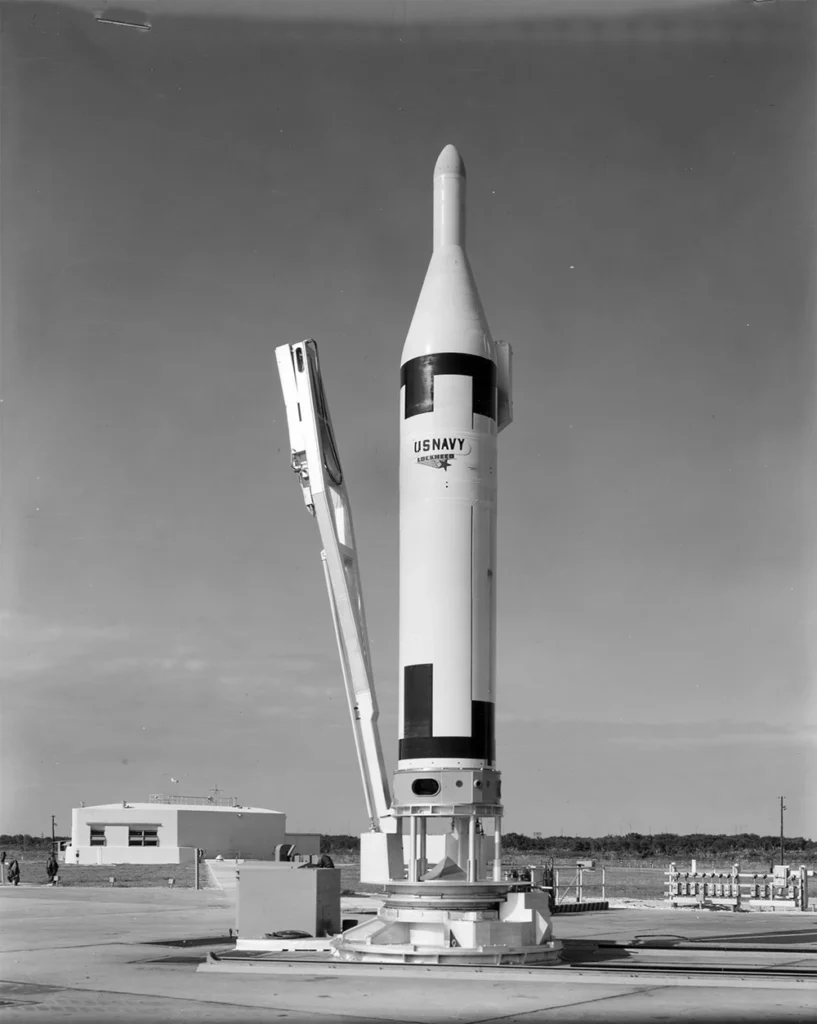
The submarines used the MK 80 missile fire control system, the same as the George Washington Class, to launch the missiles.
The Ethan Allen submarine was the first to launch the A-2 missile on October 23, 1961, and it began its initial patrol with the A-2 missile on June 26, 1962.
A notable historical event occurred on May 6, 1962, when Ethan Allen fired a Polaris A-2 missile in the Christmas Island Pacific Test Area, marking the first comprehensive U.S. test of a ballistic missile that included nuclear warhead detonation.
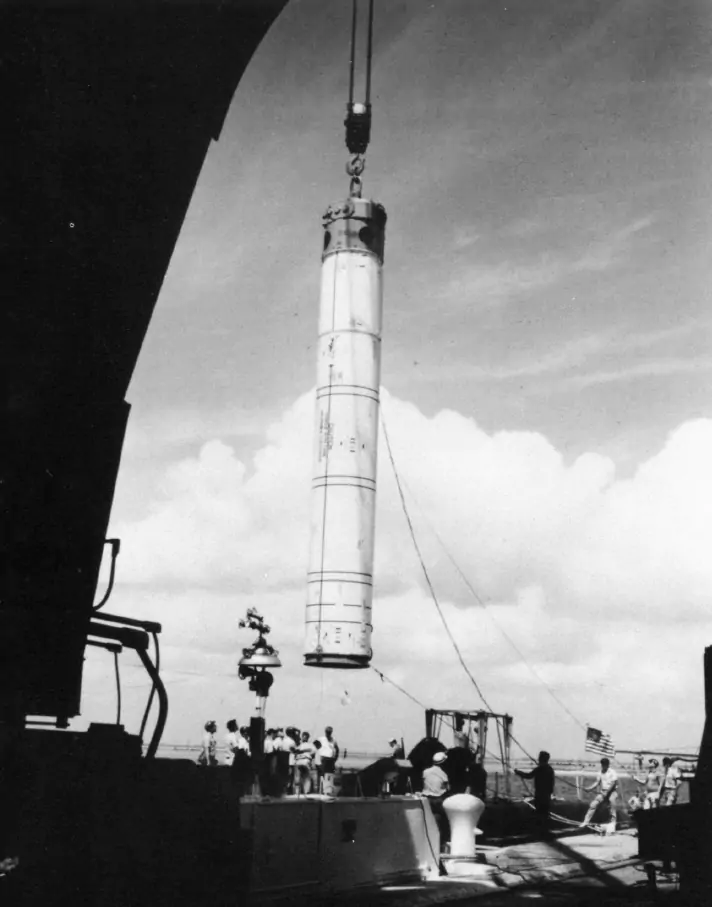
Between 1965 and 1966, the Ethan Allen Class submarines were retrofitted with the more advanced Polaris A-3 (UGM-27C) missile and a gas generator/steam ejection missile launch system, improving the range to 2,500 statute miles. The refitting also included an upgrade to the Mk 84 fire control system, which worked with the A-3 missile and gas-steam missile ejectors.
Propulsion
The water-cooled Westinghouse 5SW reactor powered the Ethan Allen Class submarines.
The submarines USS Ethan Allen (SSBN 608), USS Sam Houston (SSBN 609), and USS Thomas A. Edison (SSBN 610) were equipped with turbines designed by Westinghouse, whereas the USS John Marshall (SSBN 611) and USS Thomas Jefferson (SSBN 618) were installed with turbines from General Electric.
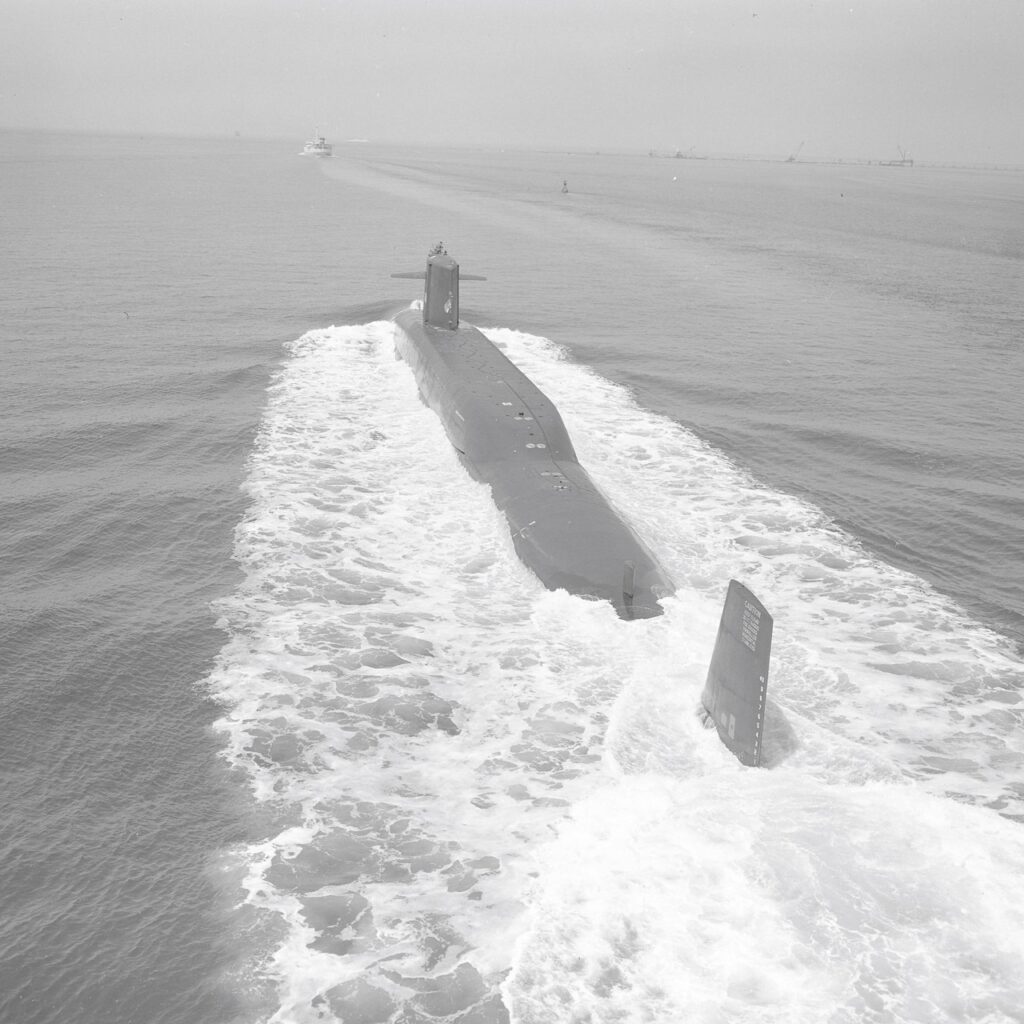
All these ballistic missile submarines utilized a seven-blade propeller. The 15,000 horsepower reactor allowed these submarines to reach a maximum speed of over twenty-one knots when submerged.
Torpedoes
The Ethan Allen Class was equipped with four 21-inch torpedo tubes positioned in the bow, solely for defensive purposes.
They initially held either the Mk 16 Mod 6 or the Mk 37 electric torpedo. However, in 1974, the multi-purpose Mk 48 torpedo became accessible and took over as the standard torpedo for all Fleet Ballistic Missile (FBM) submarines.
The Mark 112 Mod 2 system, which was connected directly to the onboard sonar, and the Mark 2 Mod 3 Ships Inertial Navigation System (SINS), served as the torpedo’s fire control.
Construction
The Polaris program, initiated in December 1957, initially planned to build five unique submarines to carry and launch a missile with a range of 1,800 miles. However, the acceleration of the program in December 1957 led to the quick creation of the five George Washington class submarines instead.
On August 22, 1958, President Eisenhower initially held back the funding for the first four Ethan Allen submarines, but reversed his decision by the end of the year, authorizing the construction of the USS Ethan Allen. Its construction commenced immediately, and it was launched at the General Electric Boat yards in Groton, Connecticut, on November 22, 1960.
| No. | Name | Builder | Keel Laid | Launched | Comm. |
|---|---|---|---|---|---|
| SSBN 608 | Ethan Allen | Electric Boat | 14 Sep 1959 | 22 Nov 1960 | 8 Aug 1961 |
| SSBN 609 | Sam Houston | Newport News | 28 Dec 1959 | 2 Feb 1961 | 6 Mar 1962 |
| SSBN 610 | Thomas A. Edison | Electric Boat | 15 Mar 1960 | 15 Jun 1961 | 10 Mar 1962 |
| SSBN 611 | John Marshall | Newport News | 4 Apr 1960 | 15 Jul 1961 | 21 May 1962 |
| SSBN 618 | Thomas Jefferson | Newport News | 3 Feb 1961 | 24 Feb 1962 | 4 Jan 1963 |
The construction of the Ethan Allen class was divided into two locations. The first and third submarines, USS Ethan Allen (SSBN 608) and USS Thomas A. Edison (SSBN 610) were constructed at Electric Boat on the Thames River in Groton, Connecticut.
The second, fourth, and fifth submarines, USS Sam Houston (SSBN 609), USS John Marshall (SSBN 611), and USS Thomas Jefferson (SSBN 618), were built by Newport News Shipbuilding on the James River, Virginia.
The submarines were launched and commissioned between 1961 and early 1962. They made their initial deterrent patrols from late 1962 to early 1963, departing from Charleston, South Carolina, where they also received their basic missile loadouts.
Service
After the completion of sea trials, Ethan Allen launched its inaugural 1,800-mile range Polaris A-2 missile on October 23, 1961. It was the first successful submerged launch of this second-generation Polaris missile.
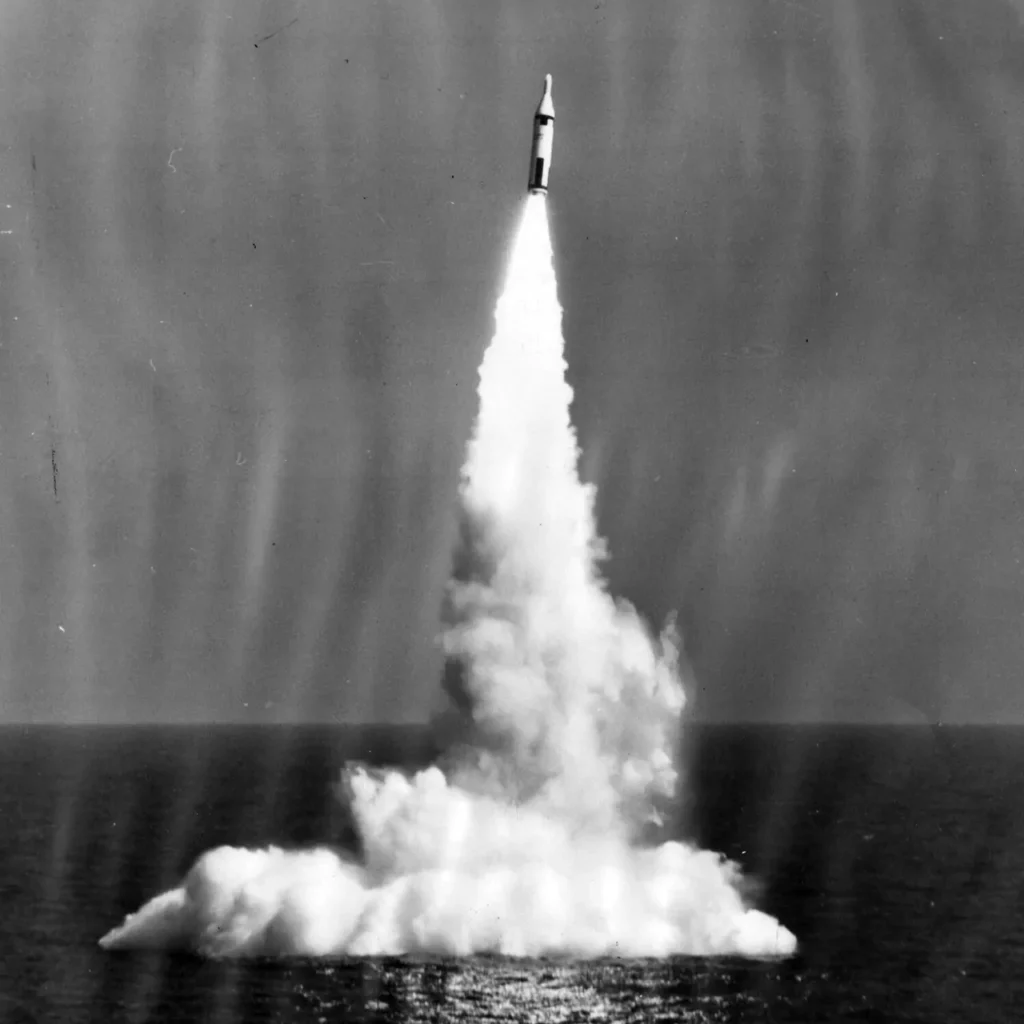
By May 1962, it joined Joint Task Force 8 at the Pacific nuclear testing range. Here, on May 6, 1962, at exactly 14:17:49 PDT, Ethan Allen made history by launching a Polaris A-1 missile equipped with a nuclear warhead.
This test, known as Shot Frigate Bird of test series Dominic 1, was the first-ever U.S. launch of a Polaris missile with a nuclear warhead. The test, conducted near Christmas Island, was the only full-systems U.S. strategic missile test that included a launch through detonation (Operation Frigate Bird).
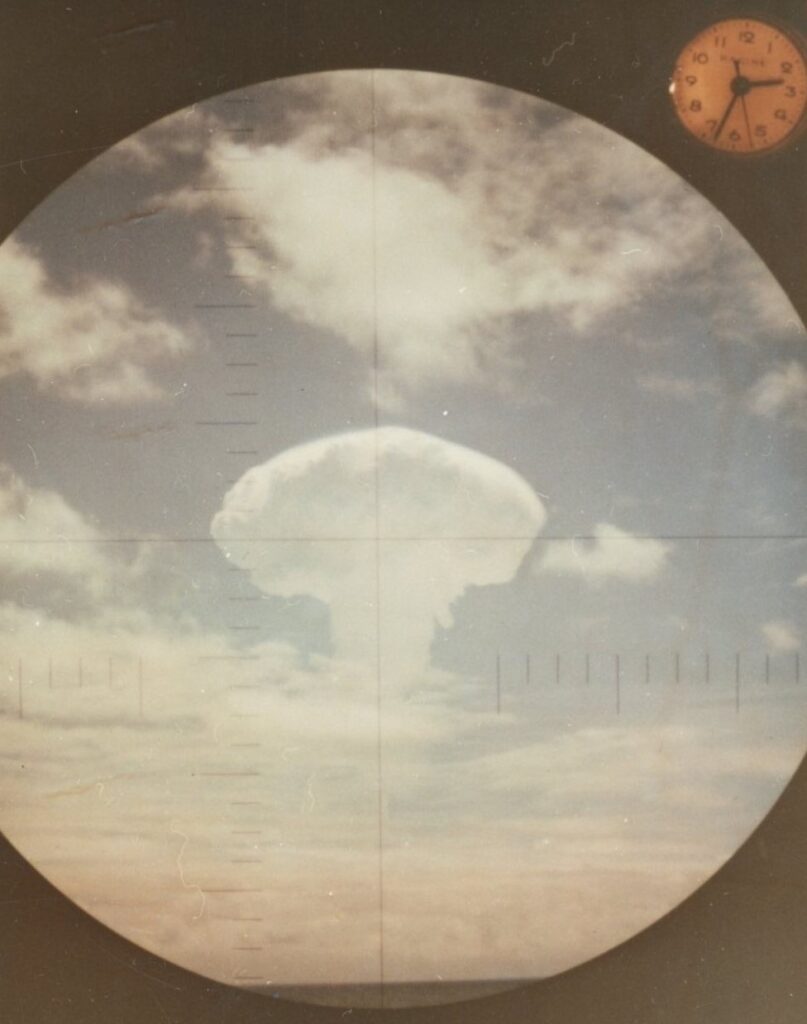
The first launch of a Submarine-Launched Ballistic Missile (SLBM) fitted with a thermonuclear warhead took place on October 20, 1961. This was executed by a Soviet Project 629 submarine that launched an R-13 missile. This missile was equipped with a one-megaton warhead, which detonated at the Novaya Zemlya test range in the Arctic during a test named “Rainbow.”
After this test, Ethan Allen returned to the East Coast, was rearmed with the Polaris A-2, and initiated its first operational patrol on June 26, 1962. This successful deployment set the stage for the future service of four Ethan Allen class submarines in the North Atlantic within the following six months. By April 14, 1963, the USS Sam Houston reached Izmir, Turkey, marking the arrival of the first FBM submarine of this class in the Mediterranean.
These submarines were progressively deployed throughout their service life across various regions, eventually replacing the Jupiter IRBMs based in Turkey. They went on to operate in the Atlantic and Mediterranean out of Holy Loch, Scotland, until the mid-1970s.
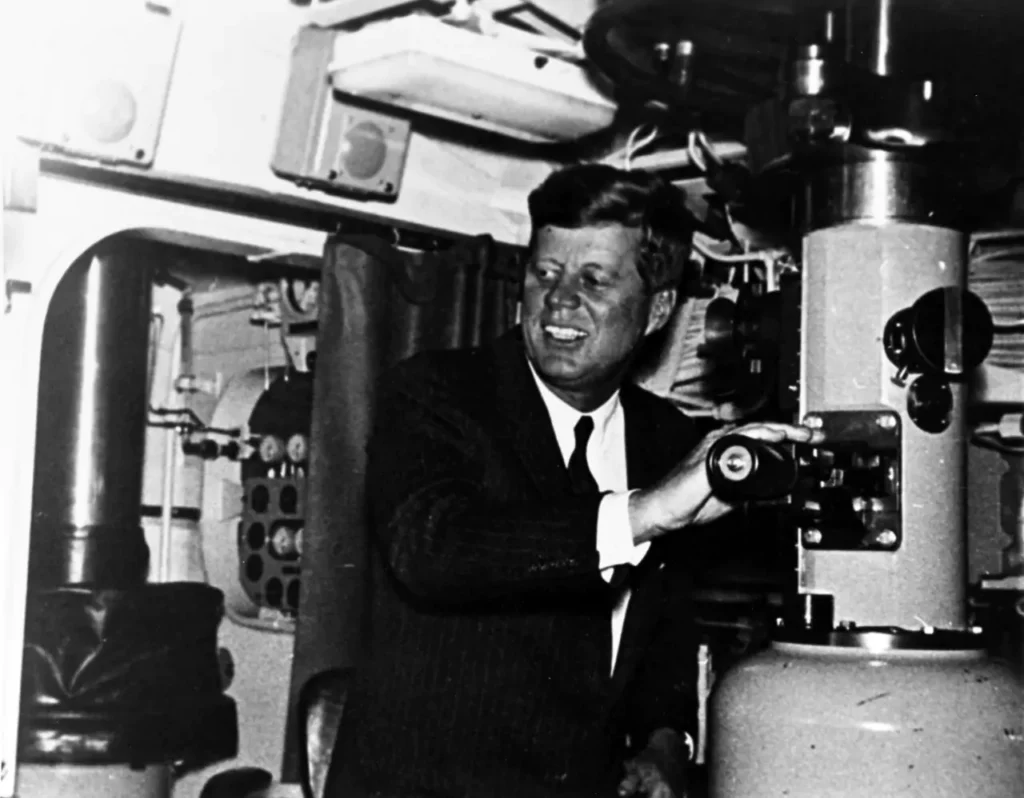
Post the deployment of the Poseidon missile, they were relocated to the Pacific to join the George Washington class at the Guam submarine base. This transition was complete by August 10, 1973, marking the shift from Atlantic to Pacific operations.
In line with the upgrade in their operations, all Ethan Allen class submarines were equipped with the advanced Polaris A-3T missile by the time of their Pacific redeployment. Specifically, Ethan Allen was re-armed with this missile in October 1972, and its first patrol with the Polaris A-3T began on August 29, 1974.
The last Polaris A-2 was retired from service with the return of the USS John C. Marshall on June 9, 1974.
Conversion to attack submarines
In the Pacific, the Ethan Allen class submarines were conducting deterrent patrols until 1981. However, they were nearing the limits of their structural and nuclear reactor lifespans by 1980. To address this, and to comply with the SALT II treaty limitations in anticipation of the introduction of the Ohio class submarines in the early 1980s, a decision was made to repurpose these vessels.
Consequently, in 1981, they were retired from their Fleet Ballistic Missile (FBM) roles. Each submarine was redesignated and converted into an attack submarine, or SSN, which necessitated the decommissioning of their missile tubes and removal of their missile fire control systems, thus marking their new era as “slow attacks” as they were nicknamed.
Special Operations submarines
From September 1983 to September 1985, Sam Houston and John Marshall underwent modifications at the Puget Sound Naval Shipyard to be repurposed as ‘Amphibious Transports’ for special operations.
Both vessels were equipped with Dry Deck Shelters (DDS), serving as housing for SEAL team swimmer vehicles, and as entry and exit points for the SEAL teams. The DDS canisters were installed on the upper decking of the two submarines, just aft of the sail.

In addition, the alterations included the addition of extra berthing spaces for up to 67 commandos, the removal of some missile tube bases, and the conversion of others into air-locks and storage spaces for equipment. The estimated operational life of these converted vessels extended into the late 1990s, with a diving depth of 300 meters (984 feet).
Decommission
The decommissioning process for the Ethan Allen Class submarines began with the USS Ethan Allen on March 31, 1983, making it the first submarine of the class to retire. Its recycling was completed by July 30, 1999, and certain parts of its hull containing nuclear reactor components can now be seen in Hanford, WA.
| No. | Name | Rec. SSN | Decomm | Stricken | Broken up |
|---|---|---|---|---|---|
| SSBN 608 | Ethan Allen | 1 Sep 1980 | 31 Mar 1983 | 2 Apr 1983 | 1999 |
| SSBN 609 | Sam Houston | 10 Nov 1980 | 6 Sep 1991 | 6 Sep 1991 | 1992 |
| SSBN 610 | Thomas A. Edison | 6 Oct 1980 | 1 Dec 1983 | 30 Apr 1986 | 1997 |
| SSBN 611 | John Marshall | 20 Jun 1981 | 22 Jul 1992 | 22 Jul 1992 | 1993 |
| SSBN 618 | Thomas Jefferson | 20 Nov 1980 | 24 Jan 1985 | 30 Apr 1986 | 1998 |
The last submarine of this class was retired from service in 1992. The process of recycling and scrapping these submarines occurred from 1992 until 1999.
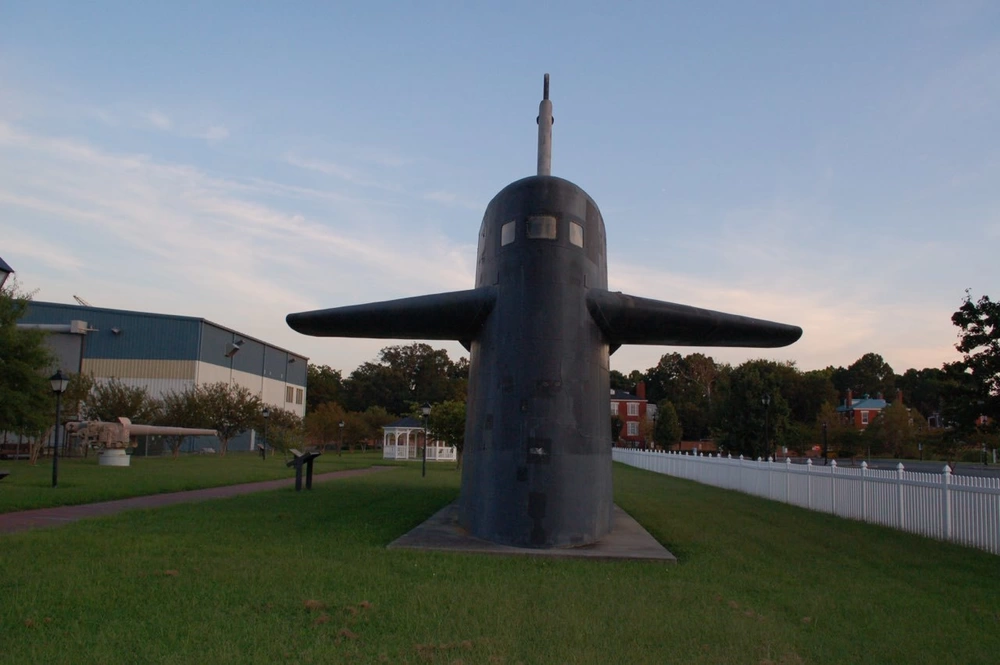
In Tom Clancy’s book, “The Hunt for Red October,” the retired USS Ethan Allen is destroyed as a diversion, enabling the rogue Soviet submarine, Red October, to evade capture.
Further reading
Bibliography
- Polmar, N., Moore, K. J. (2014). Cold War Submarines: The Design and Construction of U.S. and Soviet Submarines. United States: Potomac Books, Incorporated.
- Polmar, N. (1993). The Naval Institute Guide to the Ships and Aircraft of the U.S. Fleet, 15th Edition. United States: Naval Institute Press.
- Gibson, J. N. (1996). Nuclear Weapons of the United States: An Illustrated History. United States: Schiffer Publishing.
- Adcock, A. (1993). U.S. Ballistic Missile Subs in Action. United States: Squadron/Signal Publications.
- Friedman, N. (1995). U.S. submarines through 1945: an illustrated design history. United States: Naval Institute Press.
Great article. I was a nuclear trained submarine officer and did sea trials and then six deterrent patrols on the Thomas Jefferson from 1968 to 1971.
41 for freedom!
Made a DASO run and 3 patrols on 608 Thomas A Edison… 74-78 sea trials after retro fit, panama canal crossing from cape Kennedy, five missiles down range…
Garry, thank you for sharing first-hand experience like yours aboard the 608 Thomas A. Edison
If you have any photos you’d be willing to share and are comfortable with them being published here, I’d be honored to include them.
Best regards, Javier